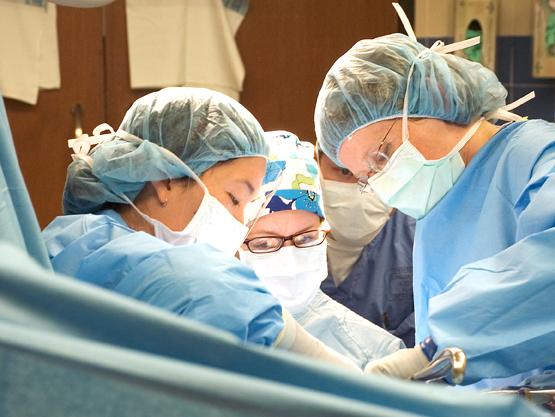In my previous life as a surgeon, one of my achievements was bringing a national quality improvement program to my community hospital. [1] With a great deal of work and significant collaboration between physicians, nurses, support staff and the administration we were able to improve the quality of surgical care. A new paper in the Lancet points out, that merely creating a quality improvement program is insufficient to move the needle of care – No surprise to those of us in the trenches.
Elective abdominal surgery, removing a gall bladder or a cancerous colon, are procedures with 30-day mortalities in the range of 1.5%. Emergency abdominal surgery, on the other hand, often has far higher 30-day mortalities, in the range of 10%, because the patients are more critically ill and there may be increased infectious complications because the intestines have developed holes, spilling fecal contents into the abdomen. The National Health Service, like American professional organizations, has developed care guidelines for emergency abdominal surgery to standardize care and improve outcomes. The Lancet study reviews how effective those standards were – spoiler alert; they made no difference.
The standards of care, let’s call it a quality improvement bundle, including the presence of the consulting surgeon in reviewing the patient, the decision to operate and the conduct of the operation. It required a consulting anesthesiologist to be present, to provide fluids to the patient based on specific physiologic parameters, and for the patient to be admitted to the ICU after surgery, among other standards.
The study looked at hospitals across the UK, divided into 15 geographical areas, involving 93 hospitals and roughly 22,000 patients randomized to receive routine care or the quality improvement bundle. They found no difference in the 90 and 180-day mortality, or readmission to the hospital. The only slight difference was that patients assigned to the improvement bundle stayed in the hospital a bit longer. Despite all their effort, the only changes were a slight increase in consulting surgeons and anesthesiologists being in the operating room and the patients going to ICU; and by slight, I mean a 3 or 4% improvement. In their secondary analysis, having a program up and running for longer made no difference either.
Why was there no improvement?
It turns out that all care is local. The successful adoption of new care guidelines often requires changes in local workflows, getting not only physicians but the entire hospital staff to work in new ways. That requires time, on the part of the physician and change leaders, to help move the culture in a new direction – and the authors recognized this difficulty. They also noted that capturing the metrics of change were more “time consuming than expected.” [2]
The one element of change that they failed to address let alone stress was that moving the culture is a high-touch endeavor. By that I mean, the leadership doesn’t move improvement by fiat, it involves making deals, twisting a few arms, knowing when to cajole and when to praise. These changes require more of a Tip O’Neil or Lyndon Johnson approach, simply saying it is better does not make it so.
I often chaffed at being referred to programmatically as the “surgical champion,” and in a status sense, it was inappropriately elitist. But I recognized in the three years I spent in that role, that champion had more to do with my intent, dedication, and perseverance. That is not to single me out, because many others in medicine feel the same calling, to improve care. One of the difficulties is getting these individuals, appropriately trained and supported, so that they can use their personal relationships with peers and colleagues, to move the culture in a new direction.
[1] I was a “surgical champion” for the National Surgical Quality Improvement Program (NSQIP) of the American College of Surgeons. It is a well-designed, well-supported program that provides more than an outline. It provides, as far as I am concerned, the most thorough and statistically rigorous approach to clinical care metrics and that includes all the similar programs developed for internal medicine.
[2] One of the best qualities of the NSQIP program is that it requires a separate nurse to collect its data, it is not a part-time job and often for a larger hospital requires more than one data collector. Those nurses are expensive. NSQIP also spends considerable time training the nurses in the definitions used in the database and assuring those different nurses in different health systems collect data in the same way – they try to minimize garbage in, garbage out. That too is expensive.
Source: Effectiveness of a national quality improvement programme to improve survival after emergency abdominal surgery (EPOCH): a stepped-wedge-cluster-randomised trial The Lancet DOI: 10.1016/S0140.6736(18)32521-2




